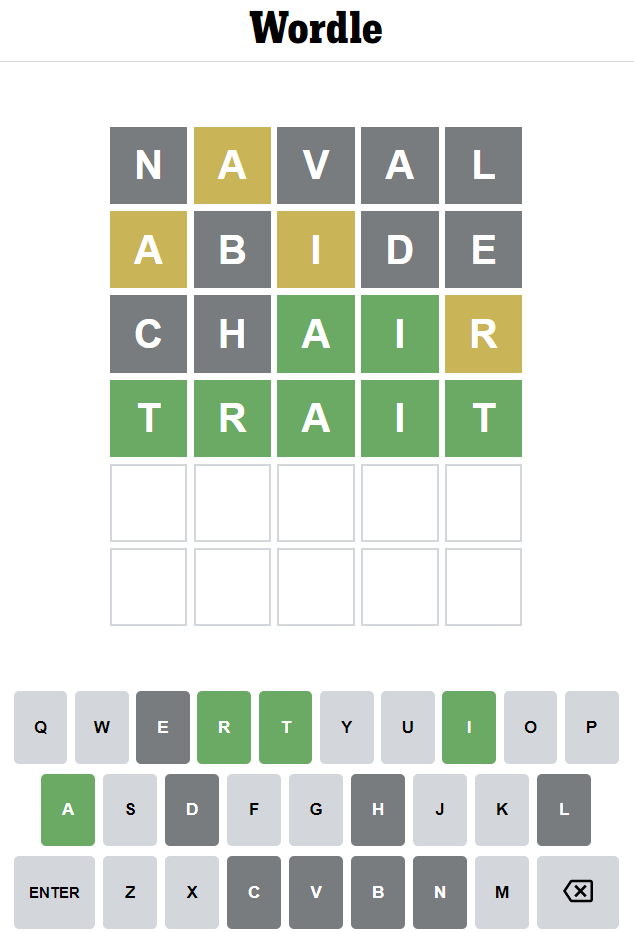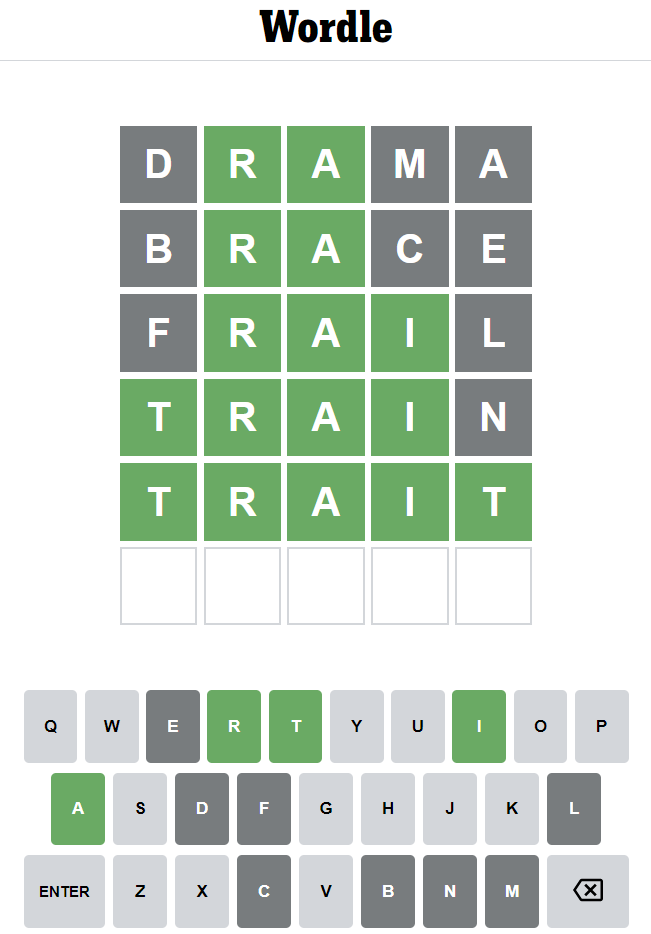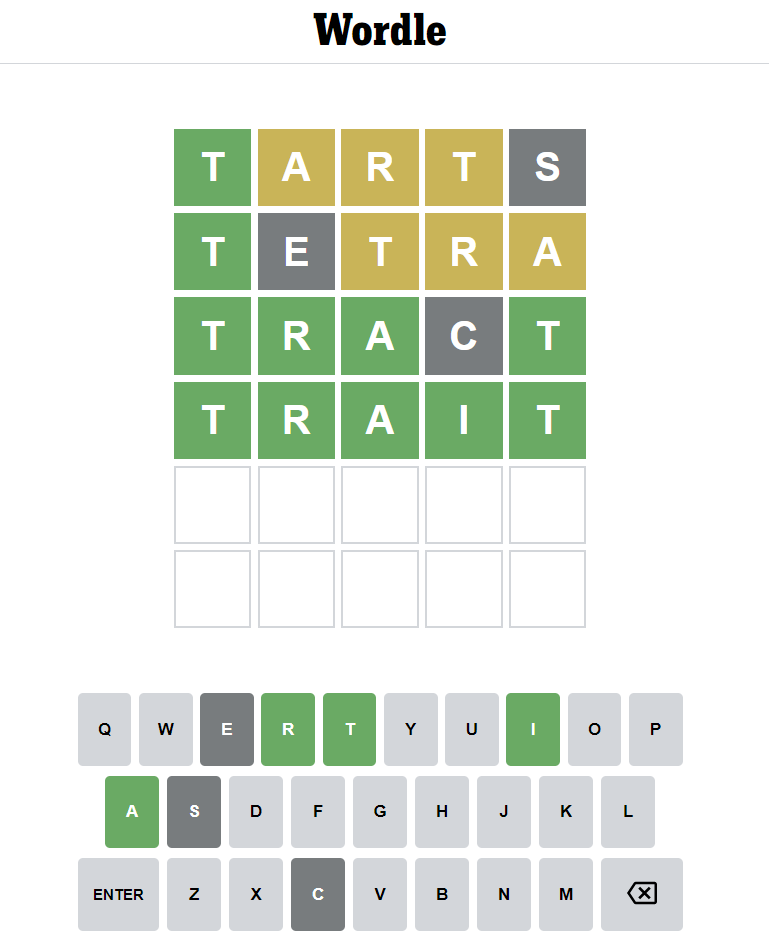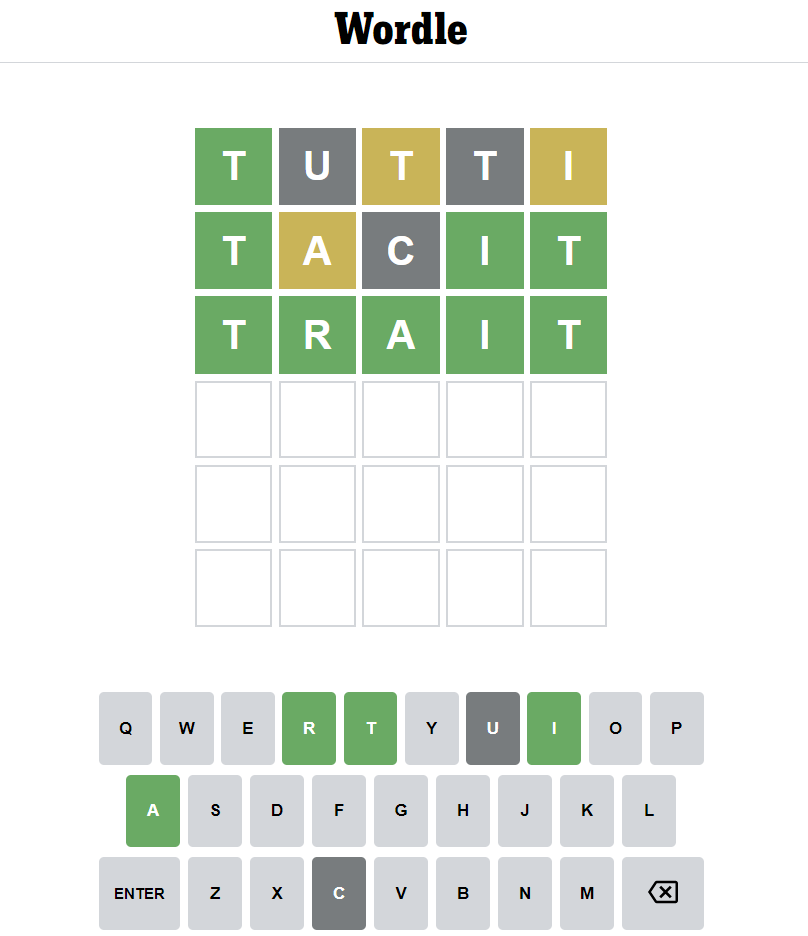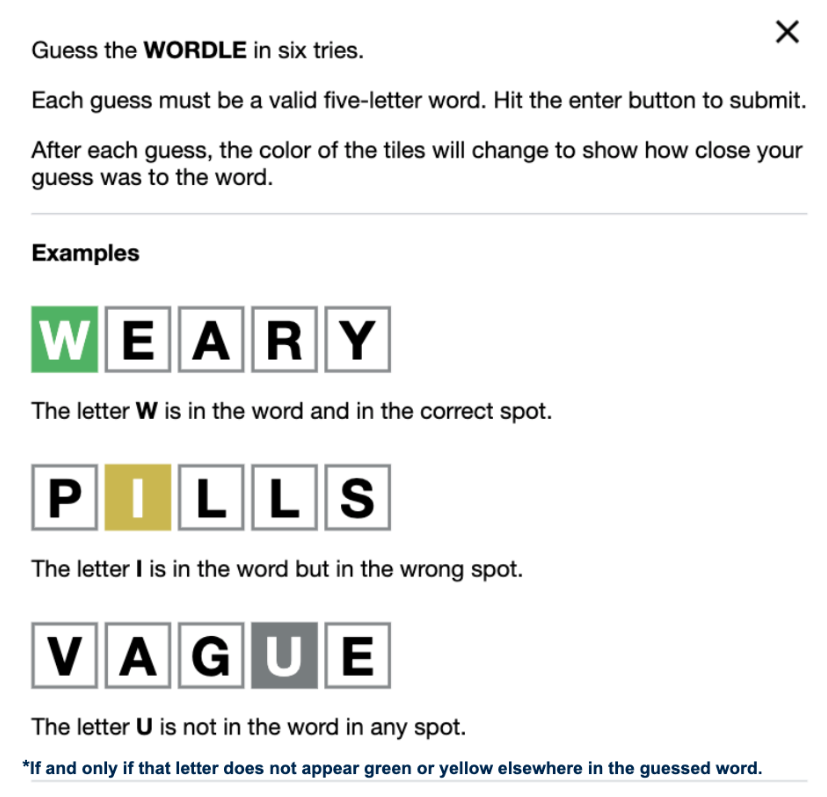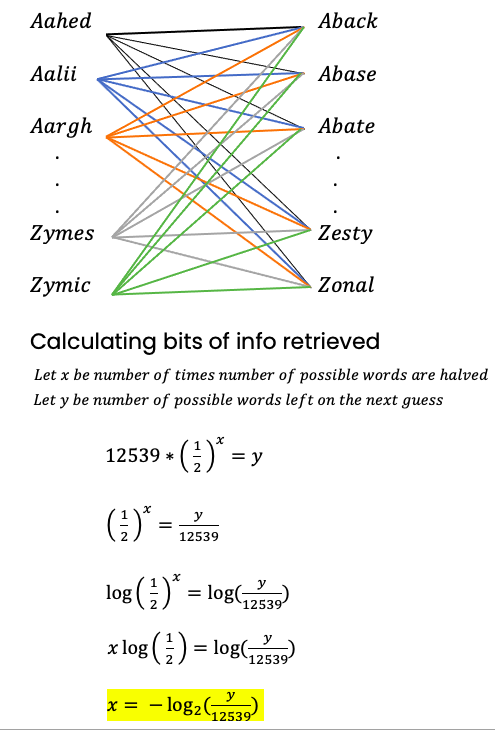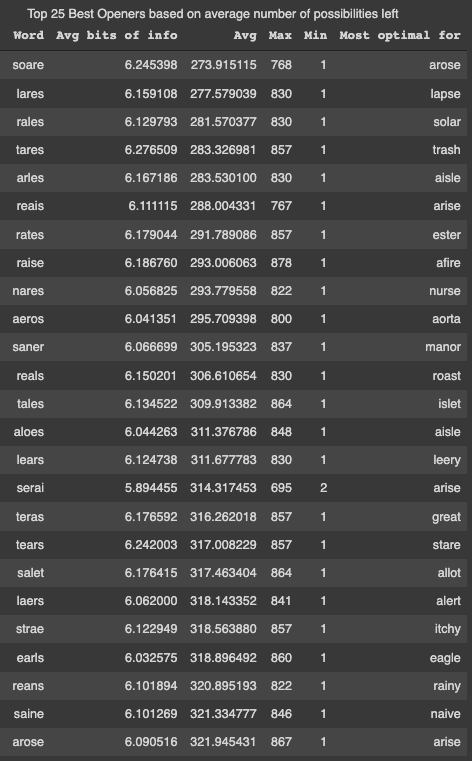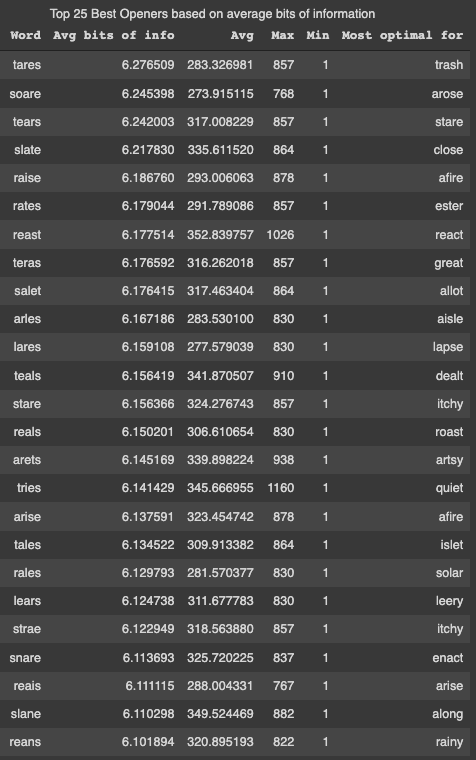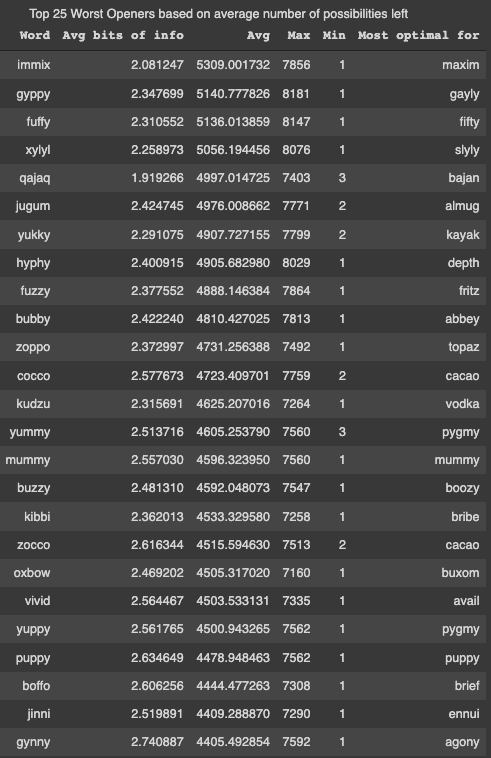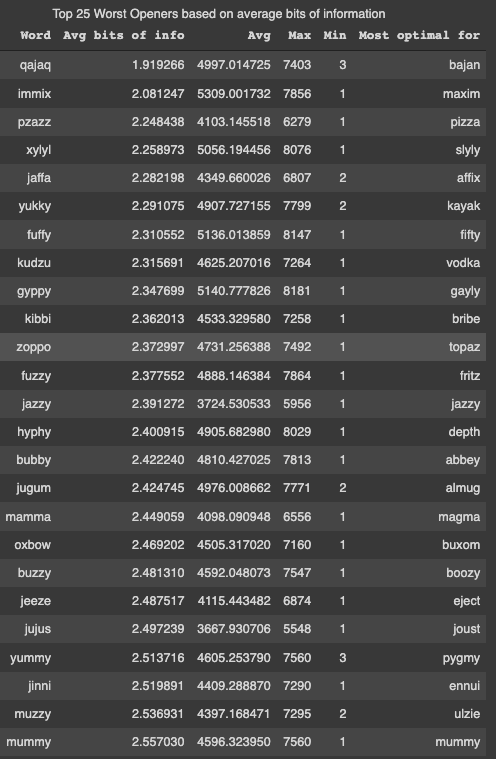Determining the Best Starter Word
First of all, we have to define what we mean by the best starter word. In this case, the best starter word would be the word which on average gives us the most information or leaves us with the least number of possible words left to choose from. To illustrate this, on the right column in the matching diagram, we have the list of valid words to be used as guesses. From Aahed to Zymic, the Wordle game accepts 12953 guesses as valid words. On the right column, we have the list of Wordle answers which will be used in the New York Times which amount to about 2310 words. Each of the 12953 possible guesses will be sent in as an answer towards each of the 2310 words. The average amount of information and number of possibilities will be calculated for each of the 12953 words.
For example, when
Aahed is used as a guess when the answer is
Aback, we will get
aahed. The number of words that match the criteria based on the color feedback is 139 so we went from 12539 possible guesses down to 139. This gives us about 6.495 bits of information since number of possibile words was halved about 6.495 times.
If we use
Aahed when the answer is
Abase, we will get
aahed. The number of words that match the criteria based on the color feedback is 38. This gives us about 8.366 bits of information.
If we use
Aahed when the answer is
Zesty, we will get
aahed. The number of words that match the criteria based on the color feedback is 1634. This gives us about 2.940 bits of information.
If we use
Aahed when the answer is
Zonal, we will get
aahed. The number of words that match the criteria based on the color feedback is 1126. This gives us about 3.477 bits of information.
Aahed would be passed to all 2310 words. The average bits of information and number of words left that match the criteria will be computed to evaluate how good it is. The average number of bits of information from Aahed was
4.468 bits and the average number of words left that match the criteria was about
1048.32 words. This will be evaluated for all 12953 words. With nearly
30 million iterations, this program took a very long time to run but the results seem to be worth it in the end. While the average number of bits and average number of possible words left yielded different results (which is not surprising given that the logarithm is non-linear), it was quite clear that
Soare was one of the best openers as it yielded an average of
6.245 bits of information and left us with an average of
273.92 words left to choose from.
A summary of the results can be found below. The code and full results can be found
here.
I also learned a lot about information theory from Grant Sanderson's video (3Blue1Brown). If you want to learn more about how this works be sure to check out his
video. Because our program does not overfit to the wordle answer list, the results of the best starter words may differ slightly.
